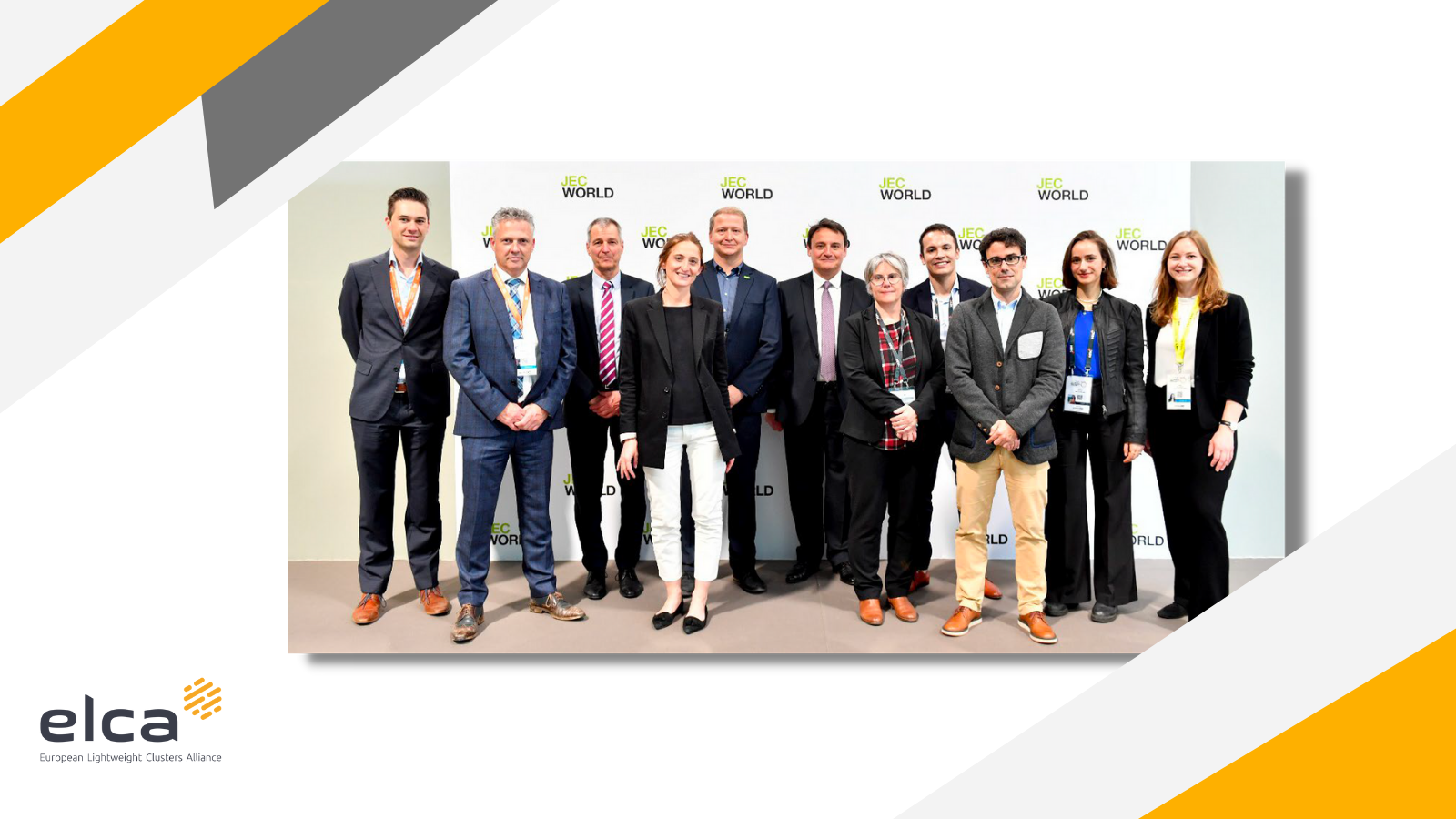Interview with Dr. George Kotsikos, from the European Commission
For our latest issue of the ELCA newsletter, we spoke with Dr. George Kotsikos from the European Commission Health & Digital Executive Agency to discuss lightweighting, the challenges, and how important the European Green Deal is for driving future developments.
 In your opinion, what are the main challenges for European stakeholders in lightweighting?
In your opinion, what are the main challenges for European stakeholders in lightweighting?
The benefits of lightweight structural designs have been widely documented in the international literature, ranging from reduction of CO2 emissions to resource efficiency. For transport applications in particular, electrification has increased the interest and demand for lightweight design solutions, which in turn require the development of innovative new materials, as well as their efficient manufacturing methods for these materials. Whatever the lightweight material innovations might be, there are two challenges that are foreseen. One is recyclability of the new/novel material solutions, and the second is the development of new, efficient and commercially attractive (i.e., low cost) manufacturing/ production methods to be in place.
How can European policy help to overcome such challenges?
European Research Policies can provide the incentives for industry to undertake the necessary research, de-risk investments that industries would not otherwise undertake, and offer solutions that can provide both economic and societal benefits at the European level. The European Green Deal whose main aim is to turn Europe into the first climate neutral continent by 2050 and thus improve the well-being and health of citizens and future generations, is currently the driver for future developments. To achieve its aims the European Green Deal addresses:
1. Fresh air and clean water
2. Healthy soil and biodiversity
3. Renovated, energy efficient buildings
4. Healthy and affordable food
5. Better public transport
6. Cleaner energy and cutting-edge clean
technological innovation
7. Longer lasting products that can be repaired,
recycled and re-used
8. Future-proof jobs and skills training for the
transition
9. Globally competitive and resilient industry
It is within these pathways that industrial policy is created and developed.
The first part of the HE program included some calls related to lightweighting, e.g. a.)2021-D6-01-10: Testing safe lightweight vehicles and improved safe human-technology interaction in the future traffic system (RIA) b.)2022-Resilience-01-11: Advanced lightweight materials for energy efficient structures (RIA) c.)2022-RESILIENCE-01-12: Functional multimaterial components and structures (RIA)
What can we expect for the next parts of the program?
The work program will continue to support research in advanced materials development as well as innovations in process and discrete manufacturing technologies. The aim of the work program is to implement the wider policies of the European Union as well as meet industry needs and promote innovation and excellence. Organizations like ELCA are key in providing input to the Commission on the challenges the industry faces and therefore your ideas and concerns are most welcome. We aim to publish the next part of the work program around the end on 2022.
“Organizations like ELCA are key in providing input to the Commission”
Advanced materials are key to many European strategic sectors, where should we focus our efforts?
It is indeed true that advanced materials are key to meeting several industrial and societal needs and the European Commission is committed to the development of advanced materials for a range of applications from electronics to medical sensors or clean energy. In terms of lightweighting, transport has traditionally been the main driver for innovation, but several other applications such as civil engineering or consumer products are also becoming important, because of energy and resource efficiency are becoming increasingly important. This means that advances in polymer composite materials, metallic foams, aerogels, advanced coatings are all areas of interest. Furthermore, smart textiles with a range of functionalities is also an area were innovations in advanced materials will be sought. Efficient design is not always possible with a single material and it is inevitable that structures and components made of dissimilar materials will be used. Innovative methods of joining those either via adhesive bonding or through innovations in additive manufacturing with dissimilar materials would be areas of interest.
Where do you see the biggest opportunities for advanced materials for lightweighting in the coming years?
As mentioned earlier, transport applications will still be the major driver for use of lightweight materials. This will apply to all modes of transport, air, road, rail, marine. Electrification of transport, will demand ever increasing improvements in properties of materials. One would say pushing the envelope in terms of performance will be desirable. Novel lightweight materials with improved stiffness, fire resistance, impact resistance, crashworthiness as well as ease of repair or self healing are still areas of interest. All this in combination with increased recyclability, cost reduction and automated production will be key to successful implementation.
One of the main obstacles for the wider use of polymer composites is the long production cycles. Therefore, the development of new fast-curing thermosetting resins to enable quick automated or semi-automated production cycles (comparable to stampable thermoplastics, such as GMTs, SMC etc.) which are also fully recyclable, would be a game changer.
How do you see the potential of European companies to become technology leaders considering the competition from Asia and the US? What does the EC expect from companies to do in order to seize that potential?
Innovation is the best way to counter competition from Asia or the US. European companies and academic institutions are not short of innovative ideas and have always led the field. However, in contrast with our major competitors, exploitation and/or successful commercialization of ideas have been lacking. There is still some conservatism in the European industry to adopting new ideas, but there are encouraging signs that this is changing. The European Commission does assist industry with innovation and product development through the Framework Programs, but also can provide assistance for development of highly innovative ideas with potential for commercial exploitation through the European Innovation Council (EIC) which aims to assist industries with low TRL research and development work.
Many thanks to Dr. George Kotsikos from the European Commission Health & Digital Executive Agency for agreeing to speak with us, take a look at their official page here.
View issue 2 of our newsletter that features this interview plus more!
To reach out to a member of the network, contact communication@elcanetwork.eu






